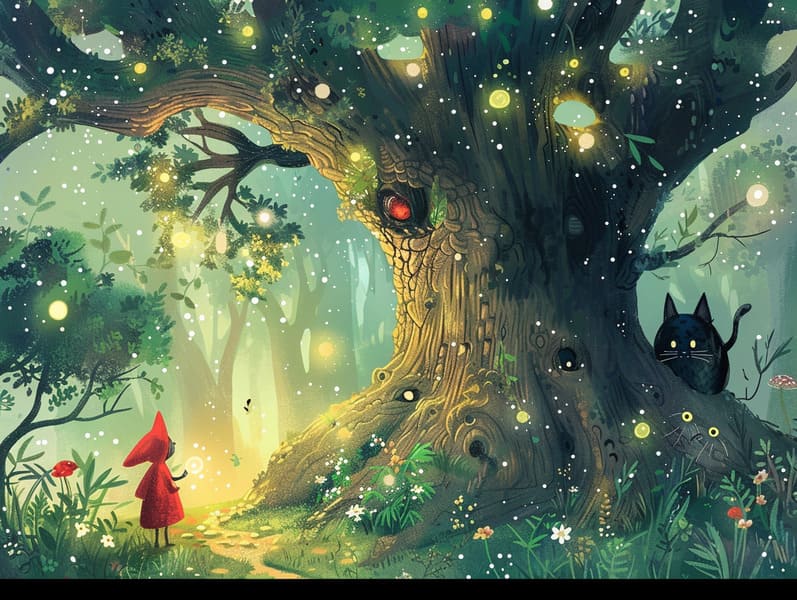The Inception of Famous Fairy Tales and Their Persistent Fascination.
The Inception of Famous Fairy Tales and Their Persistent Fascination.
Blog Article

Short fairy tales have timeless appeal. These tales have been recounted from one generation to the next well before they were ever inscribed. They sprang from a variety of backgrounds, including American traditions. They were initially narrated among elders, often carrying themes and messages relevant to the societal norms and beliefs of the time.
The famous Grimm duo, Jacob and Wilhelm Grimm, were among the first to compile and release many of these beloved stories. Their collection, "Grimm's Fables," included stories like "Ashenputtel," "Hansel and Grethel," and "Snow White," which have since become hallmarks in the world of traditional fairy tales. Similarly, H. C. Andersen's whimsical fairy tales, such as "The Little Mermaid," and "The Ugly Duckling," have captured hearts worldwide, ensuring their place in the pantheon of iconic fairy tales.
Even though they are old, these stories remain as meaningful as ever, especially as children's bedtime stories. These whimsical stories are now available in numerous formats, including vividly illustrated books, fantastical animations, and free fairy tales online.
Their lasting presence can be connected to several magical reasons:
Crucial Morals: Classic fairy tales often provide important moral lessons. Narratives like "The Shepherd Boy and the Wolf" teach the significance of honesty, while "The Race of the Tortoise and the Hare" illustrate the traits of resolve and unassuming nature. These tales offer children clear distinctions between moral and immoral, guiding their moral compass in a mild yet meaningful way.
Empathy and Understanding: Ancient fairy tales frequently depict beings facing obstacles and hardships, fostering listeners to connect with their struggles and cheer for their triumphs. For instance, "The Tale of Beauty and the Beast" conveys the benefit of seeing inner beauty to appreciate the inner core of a soul, advancing warmth and appreciation.
Cultural Perception: Many fairy tales are saturated in the cultural contexts from which they emerged. Delving into these tales can provide delightful insights into different social structures, encouraging a sense of global appreciation and perception.
Creativity and Fantasy: The extraordinary elements in traditional fairy tales—mythical creatures—inspire children’s dreaming abilities. These get more info tales transport readers to fantastical realms, inspiring fantasy ideas and a sense of awe that continues a lifetime.
Ancient fairy tales are not only delightful but also educational. They function as magical tools in cultivating various cognitive and affective skills in the young. When fairy tales are told out loud, they promote language skills by teaching new phrases and elaborate sentence structures. This practice also improves auditory skills and attention, as kids focus on every detail, expectant to see what happens next.
Furthermore, deliberating the themes and characters of timeless fairy tales can advance problem-solving abilities and thinking skills. Kids are instructed to spot patterns, make predictions, and know cause and effect. These deliberations also benefit kids speak out their thoughts and feelings, enhancing their emotional intelligence.
In today’s information age, the availability of digital storybooks has made these tales more attainable than ever. Web-based platforms and online apps give ample collections of old fairy tales that can be perused or listened through anytime, anywhere. Fairy tales told out loud are particularly popular, supplying an engaging way for the young to immerse in these alluring stories. Read-aloud stories and narrated videos lead characters and settings to life, often augmented by entrancing harmonies and music that amplify the tale experience.
The everlasting appeal of ancient fairy tales lies in their ability to alter to present eras while holding onto their essential themes. Contemporary revisions of these narratives often spotlight more different figures and modern settings, making them relevant to today’s audience. However, the fundamental themes of bravery, kindness, and rightness remain unchanged, continuing to resonate with kids of all ages.
Classic fairy tales also offer a sense of ease and knowability. They supply a well-ordered narrative with a straightforward beginning, middle, and end, often winding up with the termination of conflicts and the triumph of virtue over vice. This dependability can be encouraging for children, bringing a sense of security in an unpredictable world.
Old fairy tales continue to bewitch and instruct new generations, maintaining their charm and applicability in modern society. As children's night stories, they showcase a perfect blend of magic and knowledge, aiding moral values, empathy, and creativity. The abundance of internet fairy tales and the widespread nature of fairy tales told out loud assure that these traditional tales remain accessible to new generations.
By keeping and recounting these fairy tales, we continue to pay tribute to the rich tapestry of fantasy and cultural heritage. Whether you are enjoying a vividly illustrated book, accessing a cyber library, or listening via an spoken story, the enchantment of old fairy tales is always within reach. These stories convey of the everlasting force of narratives and its ability to unite us across centuries and lands.
Regardless if you are reading a artistically illustrated book, perusing a cyber collection, or listening through an sound book, the splendor of bedtime fairy tales is always within reach.
These tales point out of the lasting essence of narratives and its ability to connect us across centuries and lands, weaving a spell that fascinates and enlightens alike.